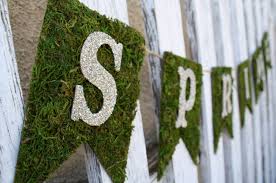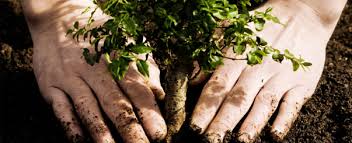Think Spring
While we continue to pray for more rain that our mother earth very much needs, Northern California folks have been fortunate to experience a mild, pre-spring like kind of winter. So as we continue to wait for more rain, why not get outside, spend sometime in your garden and get a head start on your spring chores?
To help your home and lawn look its very best in the blooming months that are coming, you may want to make the following spring to-do-list:
Remove Dead Plants and Debris: Even though we haven’t seen too many days of freezing temperatures, it still tends to get very cold and results in fallen leaves cluttering upon brown grass and dead shrubbery. Rake away any debris and dead leaves the winter has collected on your lawn. By doing so, you can open your grass up to soaking in more moisture and sunlight as the air gets more humid and the sun begins to shine for longer hours.
Dethatching: Thatch is the landscaper’s term for the layers of dead grass and thick roots that can accumulate around the bases of the grasses in your lawn. Removing this layer of dead material will help rejuvenate your lawn, allowing fertilizer and water to penetrate to the roots of the grass plants.
Mulch and seed: Due to the the lack of sun and the cold temperatures these last few months, it’s no surprise that your lawn and plants have suffered. Because of this, recommend you apply new layers of mulch to your trees, shrubs, and bushes, as well as fresh grass seed to your lawn, to ensure that your lawn will be vibrant and green by the time the springtime rolls around.
Control those weeds: During the winter months, your lawn will be contaminated with some stray weed seeds. By applying a chemical pre-emergent weed control, your days of digging dandelions and crabgrass out of the lawn are over.
Mow and fertilize: To manage the fresh spring growth and give new grasses time to mature, you should set your mower blades to the highest setting when you are cutting the grass for the first time in the spring. Now is the time to feed the lush growth of spring grasses. You can choose chemical fertilizers or use natural compost to get a lush, green lawn in the spring.
Begin a Watering Schedule: Generally, homeowners tend to avoid and ignore watering their lawn in the winter seasons. However, as the weather heats up again, it is time to begin a regular watering regiment so your plants and lawn may thrive. Keeping in mind water conservation restrictions in your area, we recommend watering at a specific time on specific days. This way your lawn will adapt to the amount of water it is receiving, allowing it to grow more freely and naturally, resulting in a more beautiful front for your home.
If you need a company to manage your spring lawn and landscaping needs, turn to DK Landscaping Inc. We have the experience and knowledge to get your lawn in shape this spring. DK Landscaping serves Petaluma, Cotati, Rohnert Park, West County, Santa Rosa and Windsor areas. Call us today 707.280.3632.
Surviving Winter Drought

Since our “official” rainy season began October 2013, Sonoma County county has seen only two inches of rain bringing us the driest season that anyone can remember in the North Bay. This has resulted in another difficult growing season for farmers and gardeners. Many cities are already implementing water restrictions and encouraging citizens to voluntarily engage in water conservation.
So what can the home gardener do to use less water, enjoy the garden more, and help the environment? Here are DK Landscapings 10 easy tips:
1) Check for Leaks and Repair– Leaks can occur for many reasons and in many parts of watering systems. Review sites weekly for “weeping” valves, sprinklers, hose bibs, etc.
2) Choose Hand Watering – over automatic irrigation when possible. The more time you spend with the plants, the more they benefit from the attention, the sooner they establish, and the less water they need.
3) Avoid Runoff – To gauge the time to run off, turn on a sprinkler zone and track the time until water runoff begins. That is the amount of run time that should be entered into the controller followed by at least 30 minutes before the next cycle.
4) Inspect and Tune-Up your Sprinkler System Monthly – Adjust your sprinkler heads to prevent water draining off your lawn and down the gutter. Reduce sprinkler run-time, and don’t be a gutter flooder.
5) Get to Know Your Meter – Your water meter is an important conservation tool. It not only measures the amount of water you use, but can also tell you if there is a leak in your plumbing.
6) Incorporate Shrubs and Trees into the garden. Once established, these deep-rooted plants require far less water than shallow-rooted perennials and annuals.
7) Learn Soil/Plant Relationships – Landscape plantings need healthy soil to grow and thrive. The more healthy a plant is, the more stress it can tolerate. Knowing soil type will help with irrigation scheduling. Being able to identify plants will indicate how to best care for the landscape as a whole. In times of drought, reducing fertilizing and pruning can help plants survive with a reduced amount of water.
8) Water – between midnight and 6:00 a.m. to reduce water loss from evaporation and wind. Water your lawn and garden in 2 or 3 short cycles rather than one long one. Watering to a depth of 4″ to 6” will encourage deeper healthier roots and allow the plants to go without water for longer periods of time.
9) Reduce the size of water features (like a pond, stream, or water fountain) to conserve water while still attracting birds and wildlife.
10) Use a Broom, not a hose, to clean your driveway, deck, or patio. Washing a sidewalk or driveway with a hose uses about 50 gallons of water every 5 minutes.
DK Landscaping specializes in water conversation, water efficiency and water management and makes it a priority when serving our clients and our community every season of the year. It is a primary consideration in everything we do, from the selection of plants to the design of irrigation systems and the equipment choices we make.
Every drop matters, and each one of us counts.
Winter Trees
When comparing winter to the lush of spring, summer and fall colors, landscape in the winter can seem subdued. But don’t be too quick to dismiss the garden in the off season. Evergreens are a great and obvious choice to add to your landscape, but what about winter trees? Winter trees offer interesting bark, brightly colored berries, and interesting form and are filled with beautiful secrets of seasons past, as well as seasons to come.
Winter trees can add structure to the landscape and garden and some make excellent hedges and screens whilst others are ideal as statement specimens. From flowering cherries and crab apples to evergreen yews and weeping willows trees offer different leaf size, shape and color. Many have attractive flowers, fruits and seeds and there are those that flower magnificently in spring and those whose leaves offer brilliant autumn color just before leaf fall.
Here are DK Landscaping’s top ten list of trees we recommend planting in the winter.
1. Himalyan Birch (Betula utilis var. jacquemontii)
2. Silver Birch (Betula pendula)
3. Snowy Mespilus (Amerlanchier lamarckii)
4. Christmas berry ‘Red Robin’ (Photinia fraserii ‘Red Robin’)
5. Freeman’s Maple (Acer freemanii ‘Autumn Blaze’)
6. English oak (Quercus robur)
7. Pin oak (Quercus palustris)
8. Crab apple (Malus ‘Evereste’)
9. Crab apple (Malus ‘Rudolph’)
10. Vilmorin’s mountain ash (Sorbus vilmorinii)
By planting trees you can reduce or improve your carbon footprint and generally enhance the environment. Trees can transform an area by introducing welcome shade, protective shelter and wildlife and are an investment for future generations.
All trees require some support and protection such as stakes, tree ties and tree guards. Fertilizer can be added to the planting hole and mulch can be added after planting to preserve moisture and keep down weeds.
Newly planted trees do best when exposed to moderate temperatures and rainfall and they need time to root and acclimatize before the onset of summer heat or the harsher temperatures of winter. Container grown trees can be planted at any time of the year providing the soil / ground is not frozen or water logged.
Winterize Your Landscape
Living in Northern California, we are very fortunate to be able to enjoy warm temperatures usually through the end of November. But as the days get colder, we may feel tempted to curl up under a warm blanket in our living rooms and want to forget about our landscaping. The truth of the matter is, your garden needs some pampering to help it through the cold and stormy months ahead and get it in good shape for next spring. So let’s bundle up, spend some time outside and get your winter checklist out of the way.
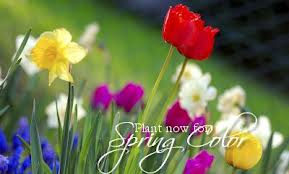
Spice up your yard by planting your favorite bulbs now for colorful springtime blooms. The ideal time to do this is before the ground freezes (which can occur anytime in November depending on where you live). You can plant spring-flowering bulbs such as crocuses, daffodils, tulips and hyacinths as soon as possible. While you’re out there planting bulbs, look over your garden and remove dead plant material and cut all flowers and clear debris from the base of roses. Fallen rose foliage can give diseases a safe place to overwinter and create problems in your garden next year.
November is about the time lawns slowly start to recover from the stresses of the hot summer. Lawns should be aerated in the fall and early spring. This process loosens soil compaction and allows water, air and beneficial nutrients to get to the roots. Since grass grows more slowly in fall, it still needs to be cut to prepare for winter. Lowering the height on your lawn mower helps the soil dry out more quickly in spring.
Cut back herbaceous perennials, bushes and shrubs: When shrubs go yellow, their stems bend towards the ground or they start to go to seed, it is time to cut them down. This is because the plants are now drawing their sap back to their roots. If they are not cut down, they may decay.
Give all of your plants a good drink, especially your trees. Their roots need plenty of moisture to make it through the upcoming months.
Protect cold-sensitive plants such as your shrubs, roses, and perennials that might succumb to blasts of cold. You can protect them with mulch or another protective covering. Place these frost barriers after the first freeze.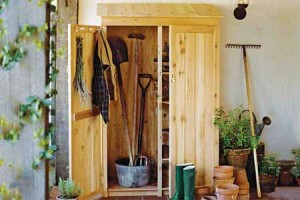
Prepare your garden’s tools for a long winter’s rest: Scrub them clean, sharpen any dull blades and rub everything with oil to prevent rust. Drain water from hoses and sprayers. Drain and store gasoline and oil from power equipment, and disconnect spark plugs. Gather trellises, row covers and other materials you won’t need any more this season. Store everything in a covered spot.
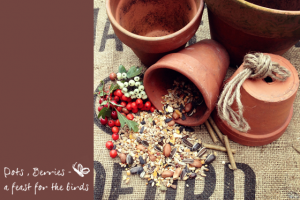 Don’t forget to feed the birds. Our feathered friends food supply grows scarce in the fall and winter months.
Don’t forget to feed the birds. Our feathered friends food supply grows scarce in the fall and winter months.
Fall Landscaping Tips and Tricks
Sonoma County embraces the fall season as temperatures begin to dip and daylight begins to wane. It marks a time of change when our summer perennials and annuals die back, the leaves fall from the trees, and our irrigation systems get turned down.
Fall is an opportune time when we should welcome a change in landscape by dressing up your yard with some of fall’s favorites like mums, gourd’s, pumpkins! They are everywhere, in a variety of colors, from yellow to deep red.

MUMS are inexpensive and can be purchased just about everywhere. They make for great boarders, or can be planted in mass for a striking display. And the best thing, they are hardy perennials and can withstand low temperatures and frost. If planted early enough they will come back next spring. As an alternative to mums, you can use Coleus, Sedum, Firethorn, Snap Dragons, and Pansies to add stunning beauty to your landscape. Throw a few pumpkins in the mix and you’ve got a gorgeous garden display.
TREES are another way to spruce up your landscaping. They are not only beautiful but require less work than your summer-time trees. DK Landscaping recommends Hickory, redbud, sugar maples, and birch trees create marvelous landscapes of fall color. 
Lastly, don’t forget to incorporate hay bales, pine straw, pumpkins, gourds, cornstalks and potted plants – all that the harvest season has to offer!
Just following these simple fall tips and tricks will make your landscape pop with color, and keep your landscape looking beautiful and colorful all season long. It will make your home extra inviting for visitors including some little ghosts and goblins on Halloween night.
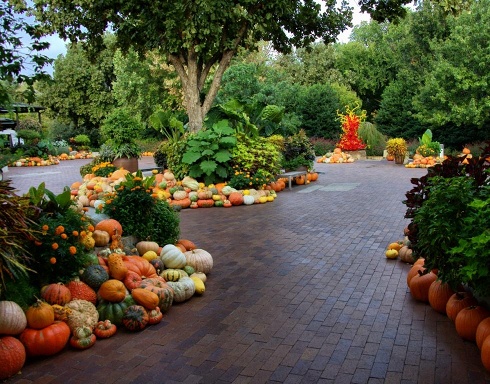
DK Landscaping is your Northern California’s premier’s landscaping company. For more information and/or a free consultation how we can add a little color to your fall life, please give us call (707) 280-3632.
Goodbye Summer. Hello Autumn!

Autumn is officially here in Sonoma County! When we think of the season, we think of vibrant foilage, crunchy leaves, the smell of crisp sweet air, pumpkins, hot apple cider and Halloween. But as we get further into the season, the sunlight begins to wane, the nights are chillier, our trees are more bare and the landscape looks tired. It’s easy for us at this point to hang up our boots, turn our backs on our landscape and take up shelter for warmth. But the reality is that Autumn is the most ideal time to tend to our lawns and prepare it for the harsh winter ahead to ensure it’s in the best of health for a springier spring. Here are DK Landscaping’s top tips to winterize your landscape:
Mow & Mulch
Mow your lawn into the fall and avoid removing more than one-third of the leaf blades with each cut. Return grass clippings and back to the soil for added lawn nutrients and use tree leaf compost to nourish plants. That will allow more sunlight to reach the crown of the grass, and there will be less leaf to turn brown during the winter.
Aerate & Prune
Aerating is a lawn process that puts small holes into the ground to allow air, water, and nutrients to transcend into the ground and allows you to remove unwanted weeds from manifesting. Help your lawn breathe through fall core aeration to strengthen roots and to prepare for a hardy spring workout. Conduct corrective pruning of trees and shrubs in fall to enhance plant appearance and vigor, and thin rather than top-shear and overgrown shrubs and flowering trees to preserve their overall shape.
Rake those Leaves
Don’t wait until all the leaves have fallen from the trees to start raking. If you do, the leaves will become wet from rain and morning dew, stick together and form an impenetrable mat that, if left there, will suffocate the grass and breed fungal diseases.
Feed for the Winter
A good fall feeding gives roots of lawns, trees and shrubs the energy needed to prepare for a healthy spring green revival. Keep fertilizer on target to prevent run-off and sweep fertilizer granules that may reach pavement back onto your lawn.
DK Landscaping is your Sonoma County lawn experts. We have all the tools, experience and are backed by 10 years trusted guaranteed service. Give us a call so we can help make your lawn beautiful! For a full list of services, please contact Kathy Lee at (707) 280-3632 or contact us by email, davidmunlee@aol.com.
Fall Lawn Care Tips
Many people have this false belief that as fall and winter approach, they need to spend less time on their lawn because grass grows more slowly in these months. The truth is, this is the time of year grass is busily absorbing energy, moisture, and nutrients in preparation for a long, dormant winter. Give your lawn the attention it deserves now, and you’ll be rewarded with a lush, healthy lawn in the springtime. DK Landscaping provides you with these simple tips:
1. Aerate: Aeration is important because it gives your lawn a chance to breath in autumn and provides room for new grass to spread. Aeration pulls up plugs of grass which help to loosen compacted soil. This improves water, nutrient and oxygen infiltration to reach your grass roots and gives seeds room to sprout.
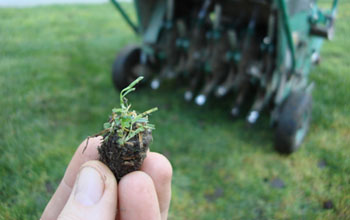
2. Fertilize: Fertilizing in the fall, before the first frost, helps your grass survive a harsh winter. It provides nutrients to reach roots for your grass to grow a stronger root system over the winter. This will result in a healthier and stronger lawn next spring. We recommend choosing a product high (10% to 15%) in phosphorous, which is critical for root growth.
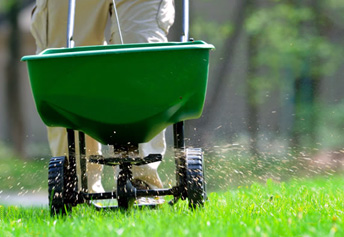
3. Weed Control: If broadleaf weeds like dandelions have taken over your lawn, now’s the time to fight back. Weeds are germinating like crazy in the fall, so make sure you apply a pre-emergent as soon as possible. The best time to apply a pre-emergent to combat winter weeds is in August or September.
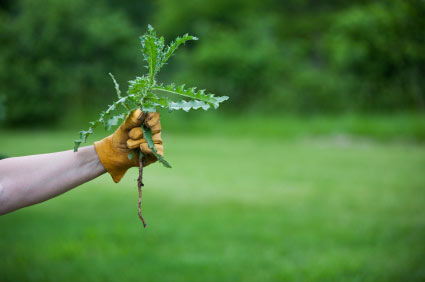
4. Rake: While those leaves can look pretty on the lawn, the leaves decay which negatively affects the grass. When there is a blanket of leaves on the lawn, sunlight cannot get through to the grass. Rake up the leaves at least once a week.
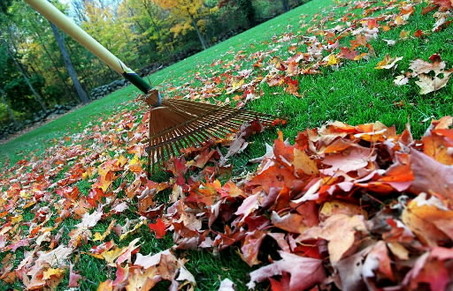
5. Mowing: Mowing your law is the single most important thing you can do to manage the vigor of your grass and its ability to compete against weeds. In the fall, the best results are obtained by mowing at the highest setting on your mower. In no case should the mowing leave the grass less than 1.5 inches (3.75 cm) tall. This will help insulate the grass during the winter.

Lastly, if you are not certain how to proceed or do not want to deal with the hassle, contact a professional lawn company in Sonoma County that provides year-round lawn care.
Why Choose a Professional Landscaper
Now that summer is in full swing, you might be thinking about hiring a professional landscaper to maintain your lawn. Everyone loves having a manicured lawn and weed-free garden full of blooming plants and pretty flowers, but let’s face it! Achieving that look often means spending hours into your yard and garden maintenance. And others, may just lack that green thumb needed to make their gardens thrive. That’s where the professionals of a landscape maintenance company come in. A landscape maintenance service takes care of the lawn, the gardens, the trees, the fountains and patios. If it’s in your yard, there’s a good chance a maintenance service company can build it, mow it, rake it and help it grow.
DK Landscaping provides you some of the few benefits of hiring a landscape maintenance service:
- A landscape maintenance service can save you time! By using commercial-grade equipment, it can dramatically reduce the time it takes to mow and perform other maintenance tasks. Most landscape companies will have multiple employees working on your yard at the same time, allowing them to tackle several projects at once and complete them in a fraction of the time.
- A landscape maintenance service employs professionals who know not only how to mow your lawn and weed your garden, but to also make sure your plants are healthy. They can create sustainable landscapes that not only enhance the beauty of your home but are friendly to the surrounding environment.
- A landscape maintenance service will ensure that your yard will be maintained regularly whether you are home or not. Homeowners tend to overlook their lawn and garden especially in the summer months, in favor of recreation and leisure activities.
- Many landscapers go beyond mowing grass and taking care of gardens. Some of these services include pool cleaning, building decks, installing pavers, patios, mulching, tree pruning/removal and building home irrigation systems.
- A landscape maintenance service will save a homeowner the expense of purchasing the various tools and equipment necessary for lawn and garden maintenance, tools and equipment that include lawnmowers, weeders, edgers, fertilizer, grass seed, leaf blowers, and shovels.
- And last, but not least, if you are a new homeowner and you’re just getting started, a landscape maintenance company will help you design the yard of your dreams.
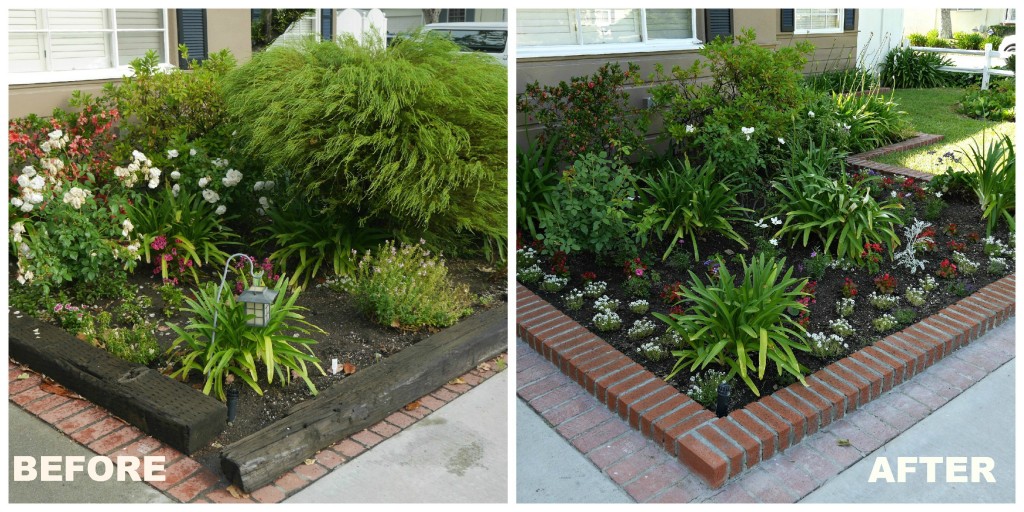
Choosing the right Landscape Maintenance Service
Get references! Don’t waste time looking through the yellow pages, radio/TV ads, or mailer discounts when your best source is your neighbors and/or friends. Ask them how much they pay, what kind of jobs the service handles and if they’re satisfied with the results. If you don’t have neighbors that use professionals, you can check with local nurseries and garden supply stores. These businesses often keep lists of professional landscape maintenance service contractors.
When interviewing landscape maintenance services, ask questions! Check out the company’s qualifications and references. Reputable landscape companies are proud of the work they perform and will be happy to show you.
Finally, know the work you want to have done and know what your budget is. This will allow the company to determine its best price quote. It’s also a good idea to get quotes from several companies if possible.
Hiring a landscape maintenance service will cost you money, but the convenience and curb appeal will enhance not only your yard but your quality of life and give you peace of mind that it will get done right!
Enjoy the Summer with These Summer Lawn Care Do’s and Don’ts
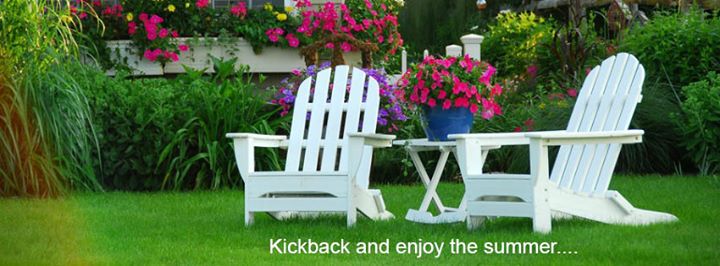
Ahhhh! Graduations, summer break, road trips, swimming, and backyard barbeques… these are all of the sign that summer is finally here! Summer is the perfect time to start planning to get your landscaping looking pristine. It not only helps to increase the value of your home but also something to be really proud of when you look out your kitchen window.
Whether you are looking to spruce up your landscaping, getting your lawn lush green again, showing it off at your next backyard barbeque or simply enjoying it barefoot, DK Landscaping provides you do’s and don’ts as a guide to your lawn looking it’s best this summer.
Tip #1 – Do Feed Your Lawn
Fertilizing is one of the best lawn maintenance choices you can make. But over-fertilizing or misapplying it can have some ugly effects on your lawn. The nitrogen in fertilizer can burn your lawn, and when temperatures soar, the likelihood of burning goes up. You’ll know you’ve done this when the grass turns brown To prevent damage, go for a slow-release fertilizer with a lower nitrogen content than usual and follow the directions carefully.
Tip # – Do Mow Regularly
Mow regularly. This could range from once a week to twice a week depending on the growth rate and desired height. Cut your grass using the highest setting, and reduce it as the summer progresses. This will result in the number of weeds decreasing, as well as cause more water retention.
Tip #2 – Do Keep Lawn Hydrated
The most common summer lawn care mistakes is not watering your lawn inadequately. The best time to water your lawn in the morning… before the sun rises. Watering your lawn between 10 AM and 6 PM, will evaporate your water due to the heat and sun! Watering your lawn right after the sun sets will leave your grass moist overnight and promotes fungal growth. DK Landscaping recommends setting your sprinklers so they automatically deliver water in the morning and check the location of each sprinkler and make sure it’s watering your grass, and not the sidewalk or driveway!
Tip #5 – Don’t Smother Your Lawn
Grass is a resilient plant but let’s face it, pets and kids are hard on grass and the pitter patter of tiny feet can really ruin a grass plant’s day. We recommend to mow tall. If you mow the grass at least a half inch to a full inch taller than is normally recommended for your variety, the grass will be healthier and resist the stress better. Also, as much as slip and slide is fun for your kids, it’s he worst thing for your lawn by smothering it with plastic.
Tip #6 – Don’t Forget to Enjoy
Even with the work you have to do, don’t forget to take a break and relax. Grab a refreshing drink and enjoy the beauty of your lawn!
Got Curb Appeal?
First impressions are everything! The same concept holds true when speaking about your landscape. From a real estate perspective, a good first impression, aka “curb appeal” is about using your landscape to enhance the appearance of your home. Whether you want to boost your curb appeal, market the value of your home or simply want to transform your space to make your lawn & garden look pristine, DK Landscaping helps you come up with the inspiration for the look you desire and making your property the talk of the neighborhood:

Here are a few simple ways to enhance and maintain your landscape:
General maintenance: Mowing your lawn, pruning back trees/shrubs weeding, fertilizing, mulching, leaf and debris-free to watering will keep your yard looking beautiful and eye-catching throughout the entire growing season.
Visually inviting entryway: There are a lot of little things you can do to spruce up your front entryway including keeping it debris free. If you have an old, dull concrete stoop with cracks? Update to a beautiful stone stoop or porch.
Providing a focal point: Plantings, landscape lighting like lamp posts, and decorative pieces like a small water fountain are good ideas.
Colorscape: Adding a splash of vibrant annuals and perennials flowers and plants will make a big statement.
Landscaping lighting: A small yet impactful solution, outdoor accent lighting can not only enhance your yard aesthetically but also eliminate any dark, shadowy areas at night and prevent any safety hazards.
Updated driveway and/or walkway: If your driveway is old and outdated or starting to crack, updating it can have a big impact. There are pavers that imitate any stone for driveway landscaping—brick, travertine, limestone, etc. Same goes for any walkway in your yard. A new stone or paver walkway is a great front landscaping idea.
Stairways: Like retaining walls, stairs are ideal for hilly yards. Adding a staircase walkway to your sloped yard is a great way to add curb appeal—and give your visitors easier access to your door.
It is pretty easy to do many of these things yourself, but perhaps your front yard is devoid of plants and eye-catching features. You may consider planting a tree as a focal point, installing a trickling fountain, or even building a patio. In addition to these memorable details, it is important to use color to attract and focus attention on positive attributes of the landscape. This not only requires planning, but you may need a landscaping company to see some of these designs through.
Having good curb appeal makes selling your house easier, as potential buyers are looking for an aesthetically pleasing home. But don’t brush off having curb appeal even if you are not putting your house on the market. An attractive landscape design is always important!


